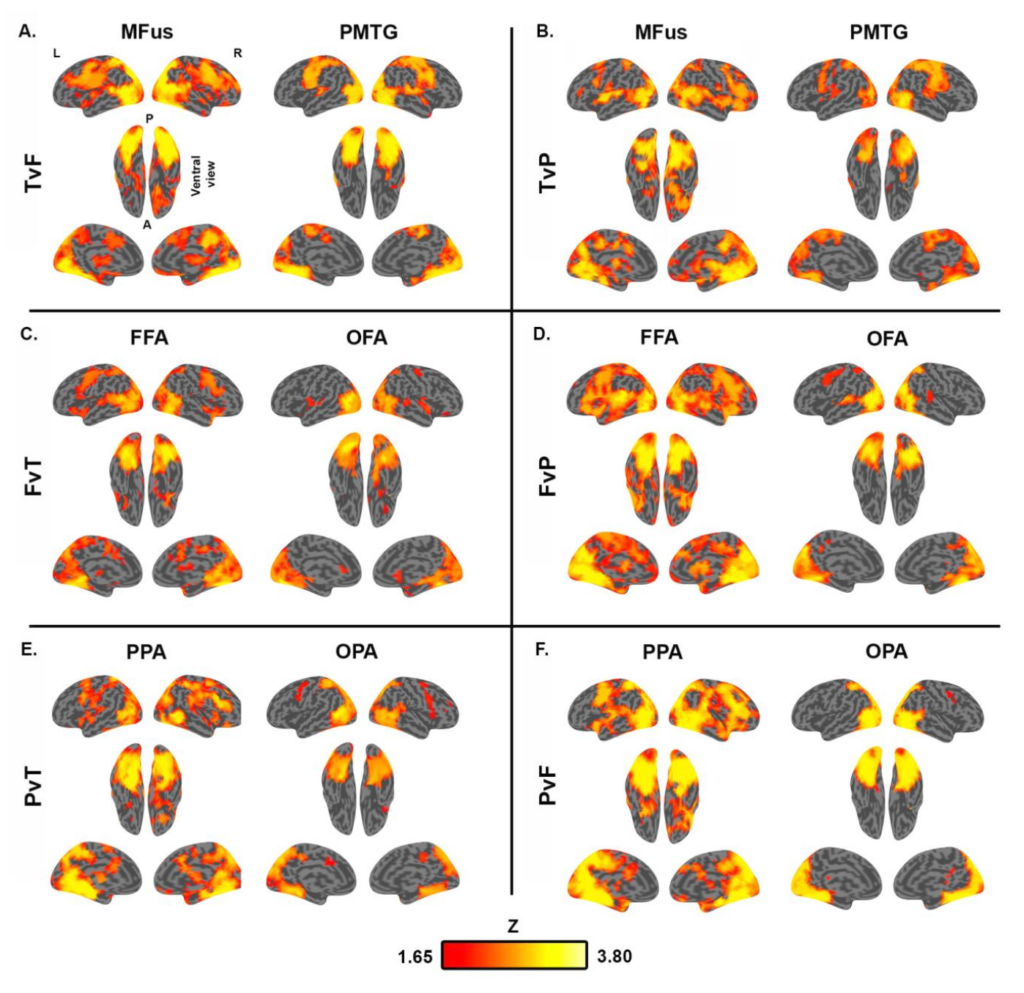Jorge Almeida
ProAction Lab http://proactionlab.fpce.uc.pt/
Faculdade de Psicologia e Ciências da Educação da Universidade de Coimbra
Our ability to recognise an object amongst many others is one of the essential human mind features. Understanding how the human brain organises information about things and how that organisation allows us to quickly identify those same objects is the project’s primary goal. However, object recognition requires tremendous computational effort, as we need to solve a complex and recursive environment with ease and proficiency. This challenging feat is dependent on the implementation of an effective organisation of knowledge in the brain.
ContentMAP will forth a novel understanding of how object knowledge is organised in the brain by proposing that this knowledge is topographically laid out in the cortical surface according to object-related dimensions that code for different types of symbolic content – the content to topic mapping.
The investigation will use a combination of fMRI, behavioural, and neuromodulation approaches to study this fine-grain topography. First, patterns of neural and cognitive similarity between objects must be obtained, and from these extract object-related dimensions using a dimensionality reduction technique. Then, these dimensions will be
parametrically manipulated with the innovative use of a visual field mapping technique and test how functional selectivity changes across the cortical surface according to an object’s score on a target dimension. Moreover, the tuning function of these content to topic maps will be tested. Finally, to mirror the complexity of implementing a high-dimensional manifold onto a 2D cortical sheet, the topographies for the different dimensions will be aggregated into a composite map, and an encoding model will be developed to predict neural signatures for
each object. To sum up, ContentMAP will dramatically impact the cognitive sciences by describing how the stuff of concepts is represented in the brain and providing a complete description of how fine-grain representations and functional selectivity within high-level
complex processes are topographically implemented.

Computational Requirements:
Considering the amount of data and the computational needs that this type of data requires at the level of pre-processing and post-processing, the use of HPC is essential to allow these studies to be carried out on time. In this sense, we have been using the Cluster Navigator of the Advanced Computing Laboratory (LCA) of the University of Coimbra. The results are straightforward – the gain in computing time required is abysmal! Using HPC allows us to perform these analyses in one to two weeks – something that on our 14-core computers would have taken a few months (which often meant that the calculations weren’t done)!
